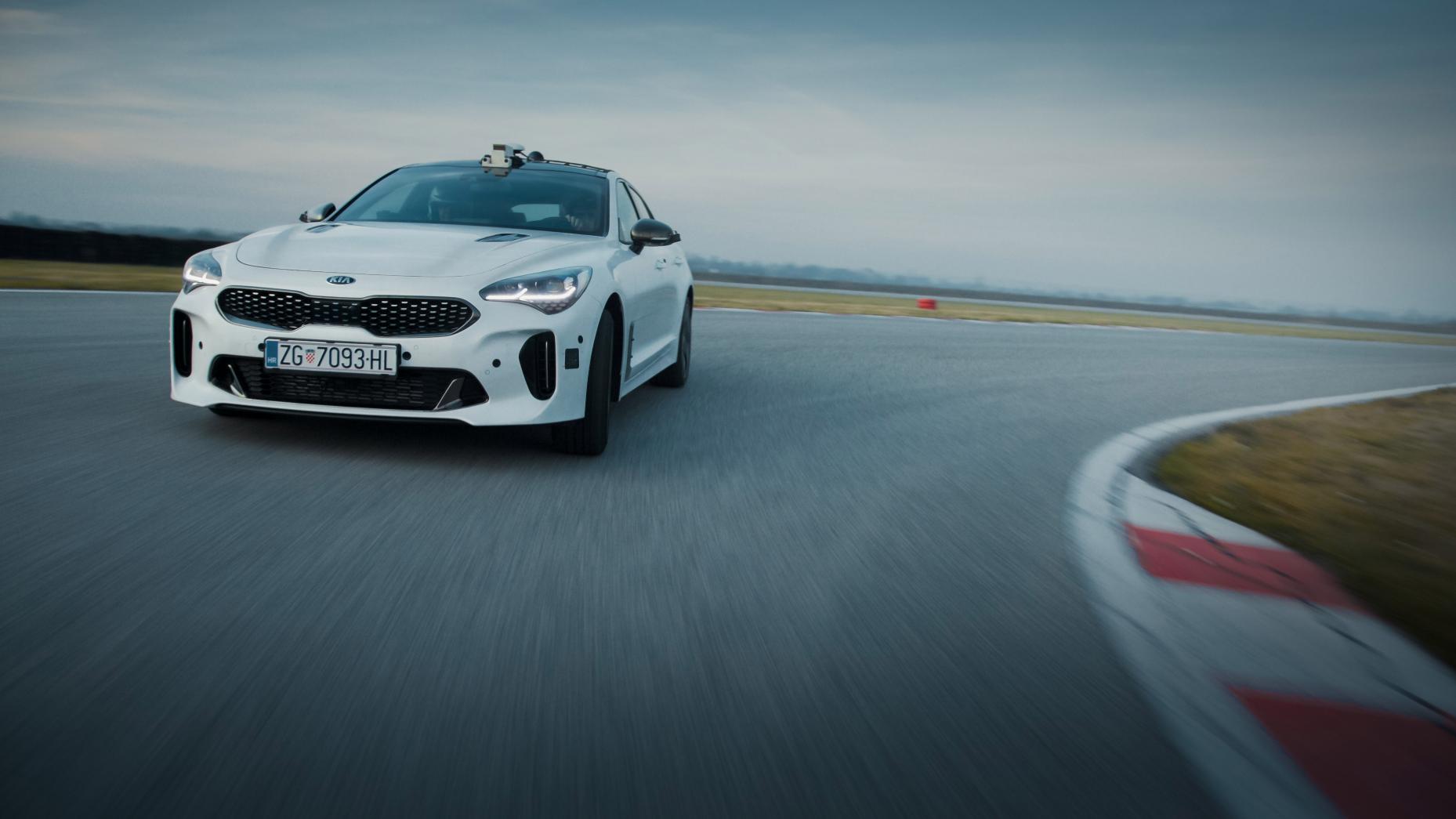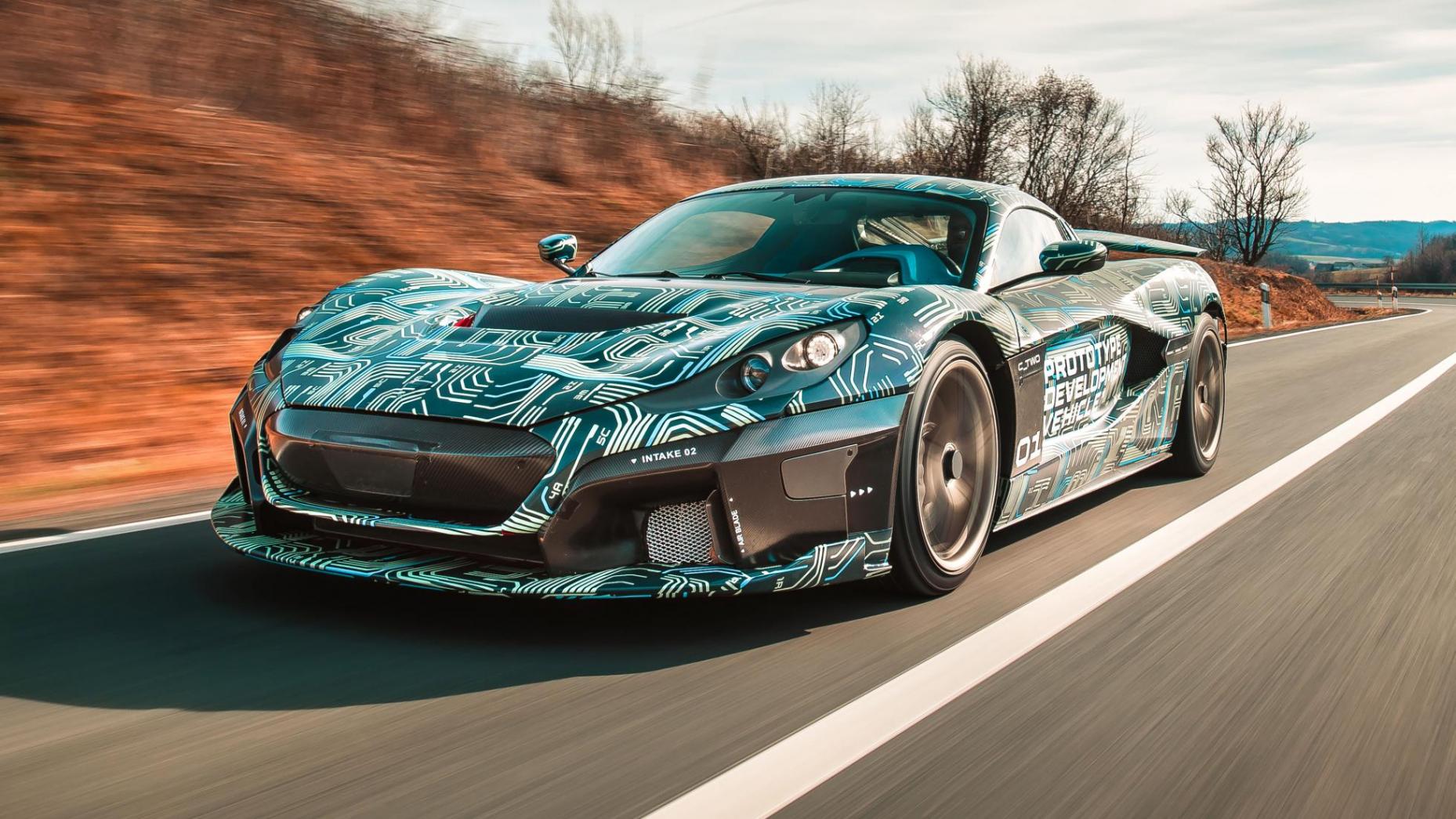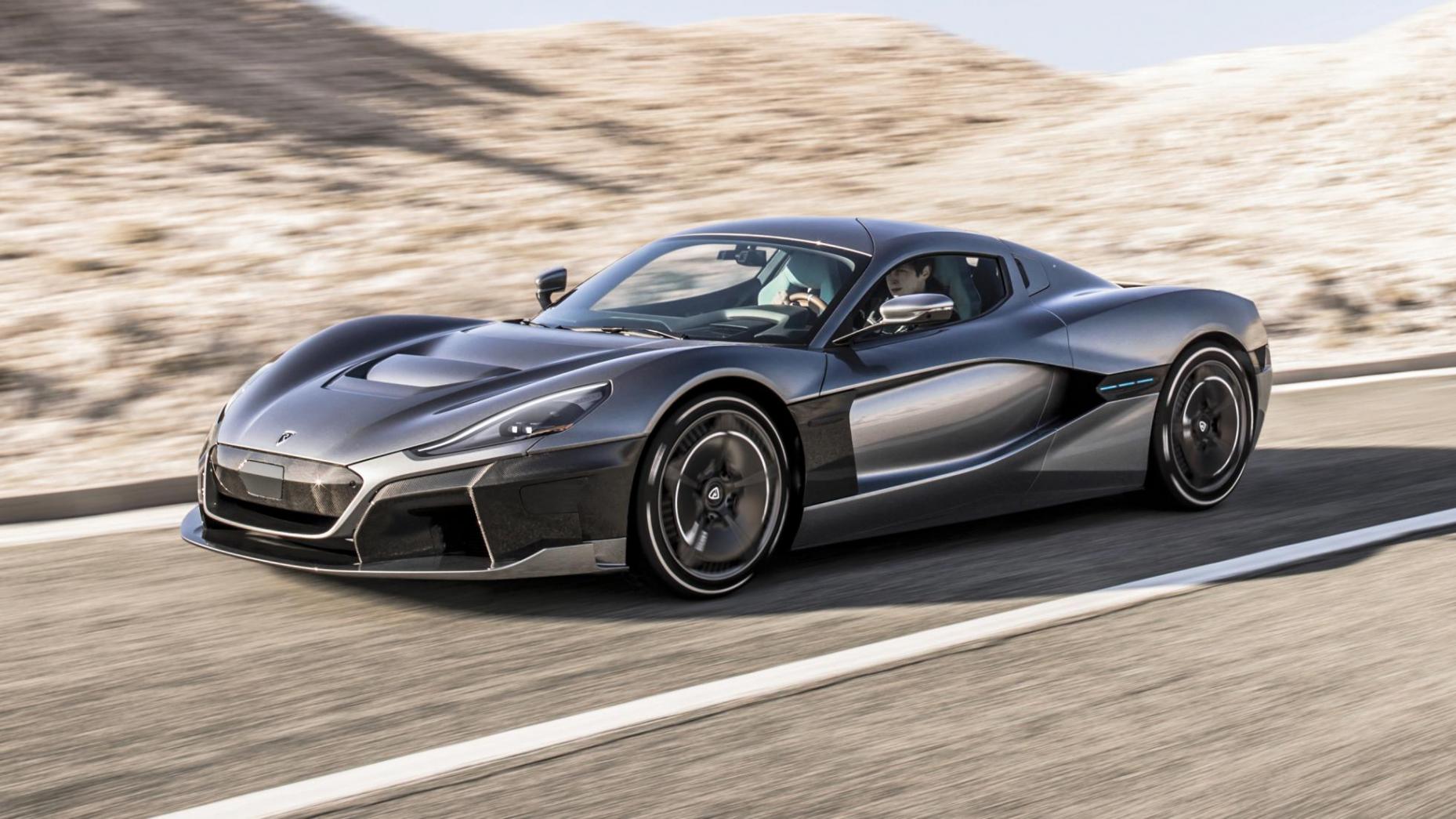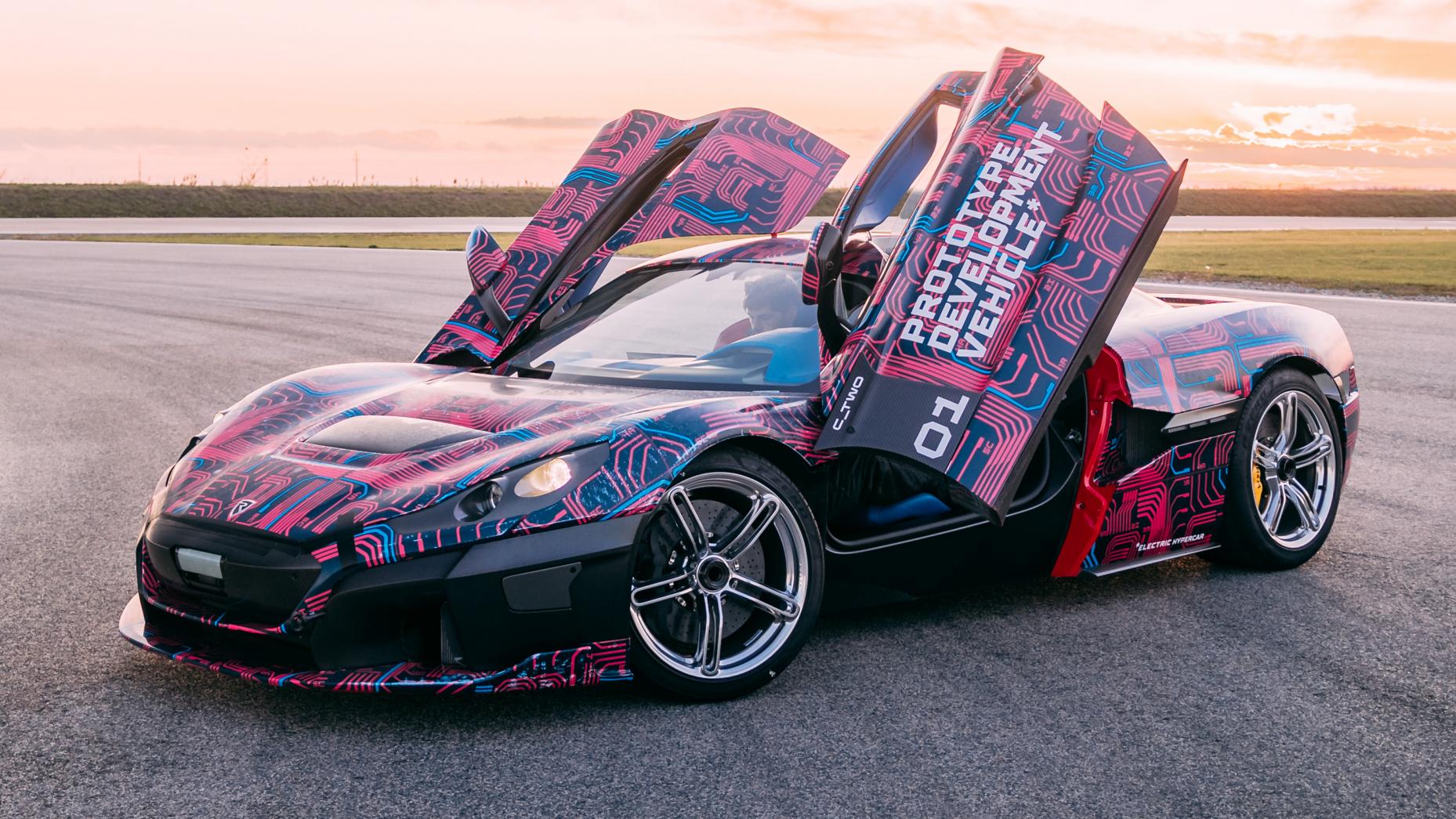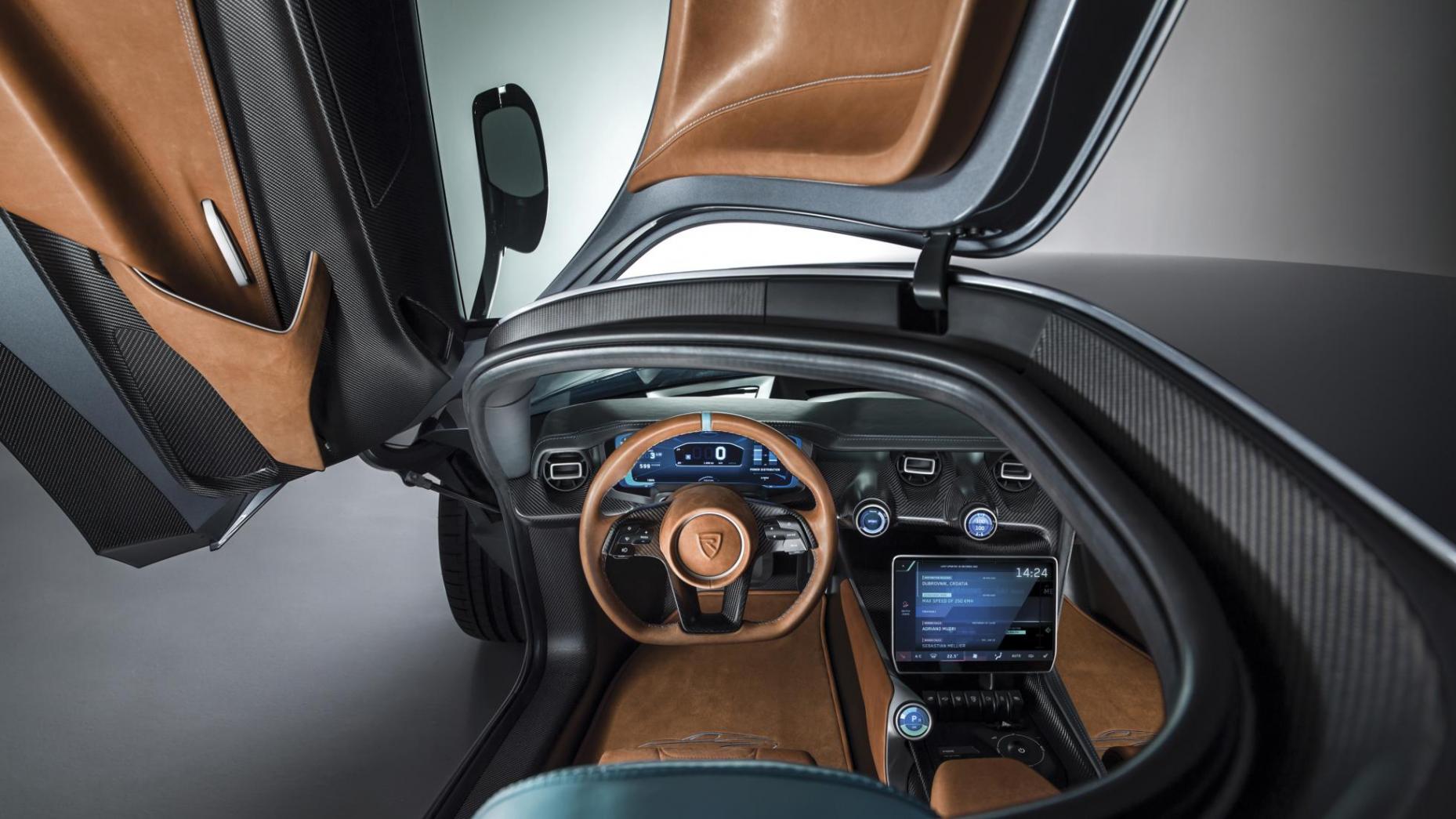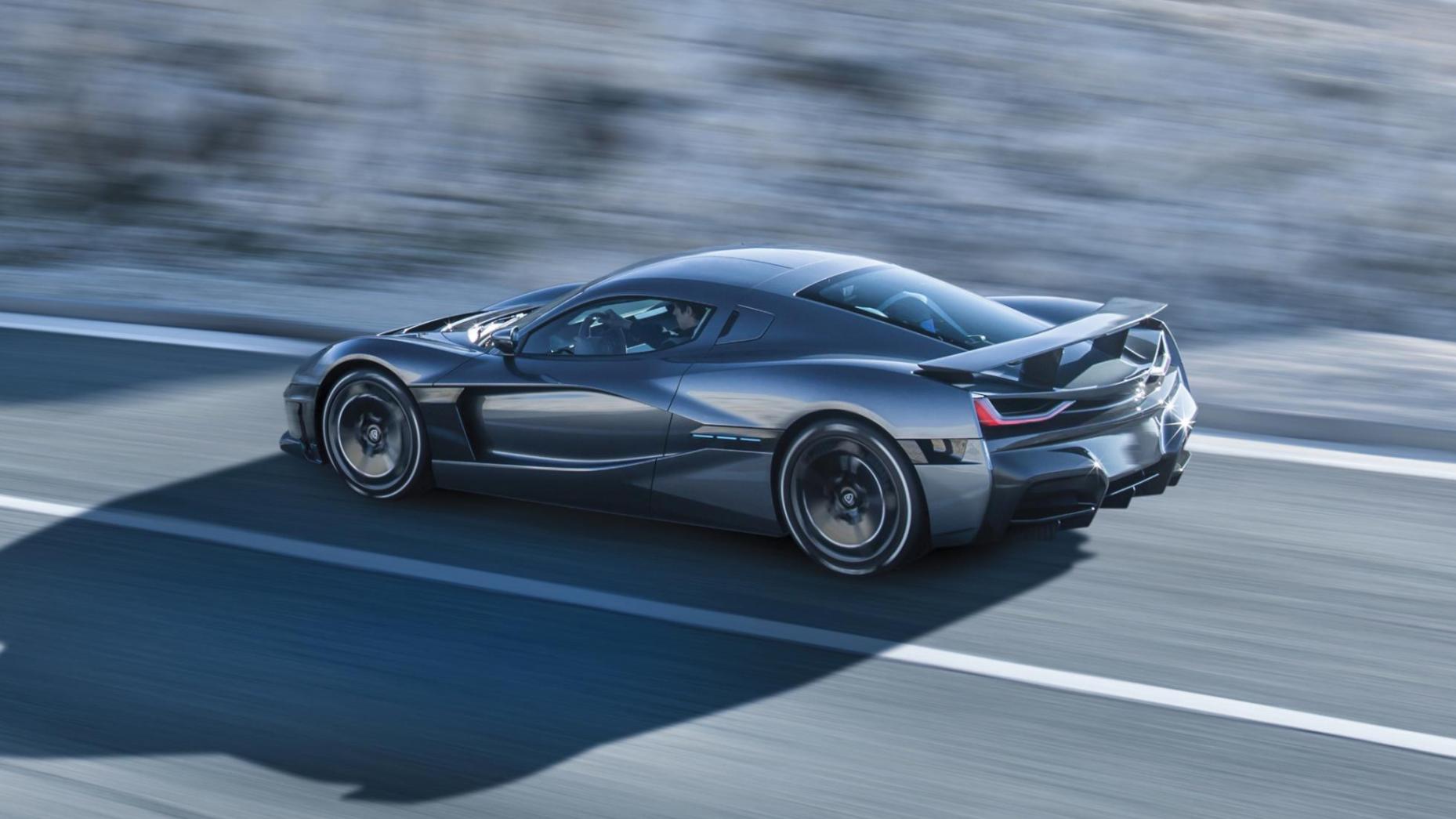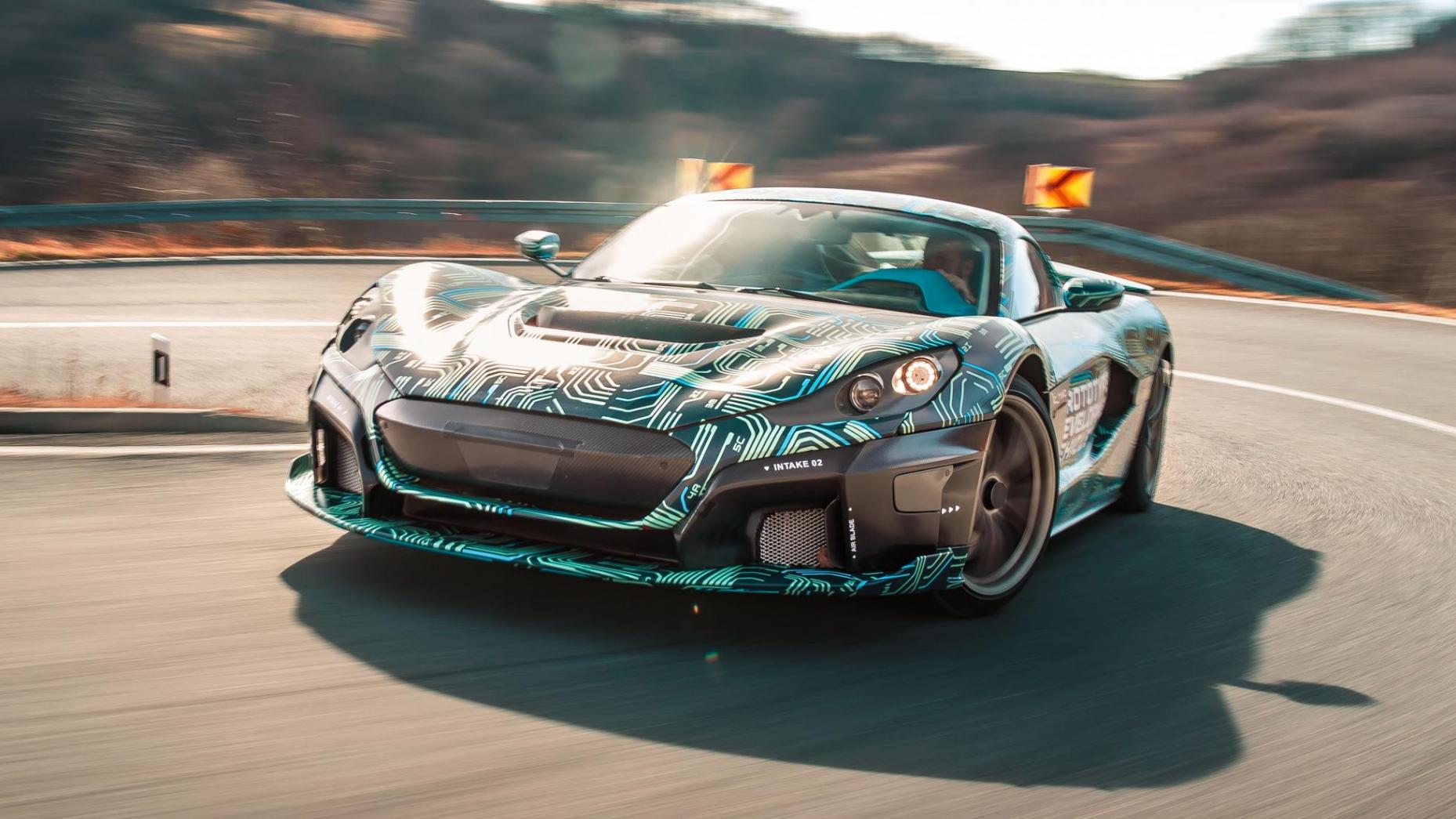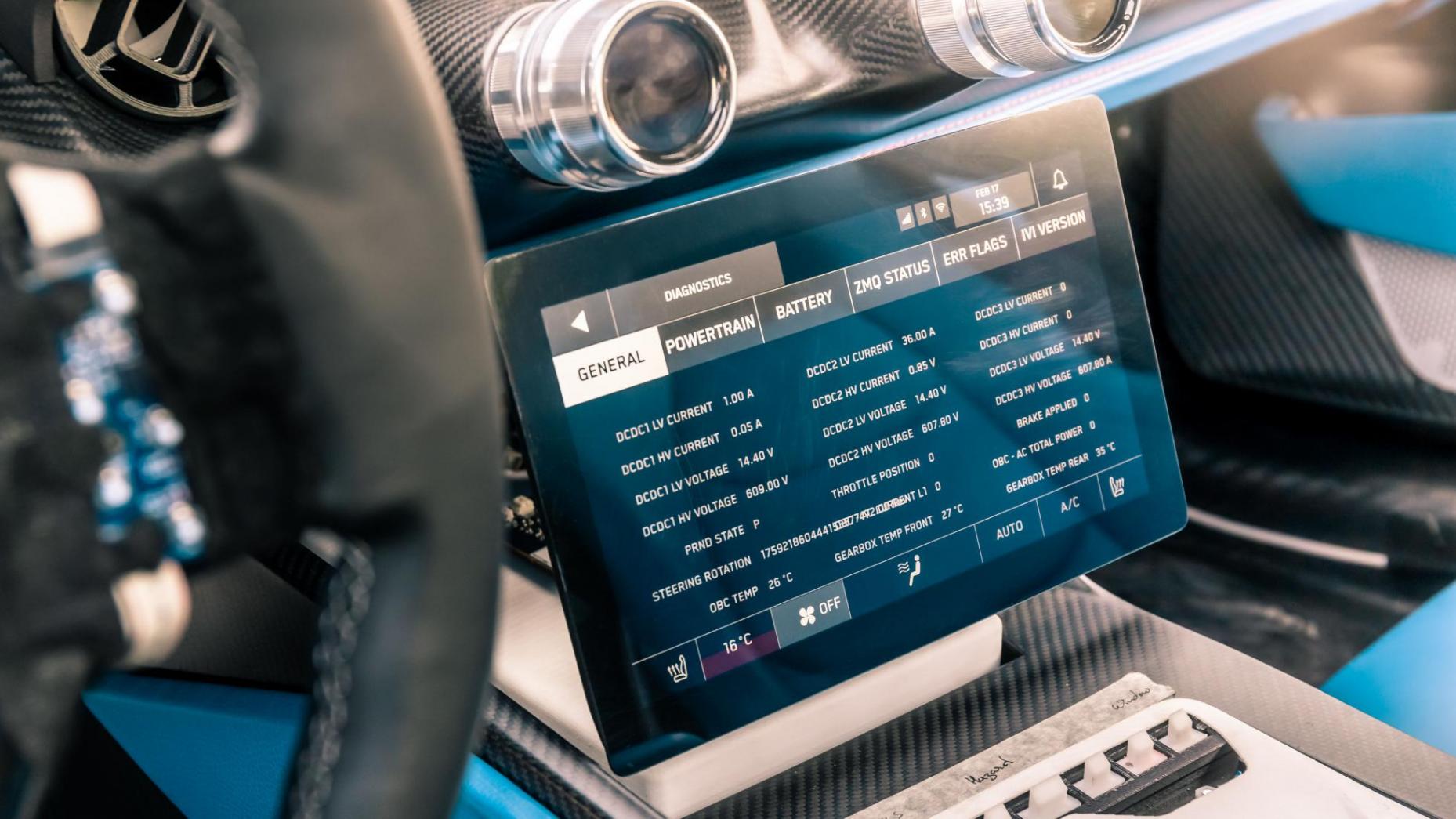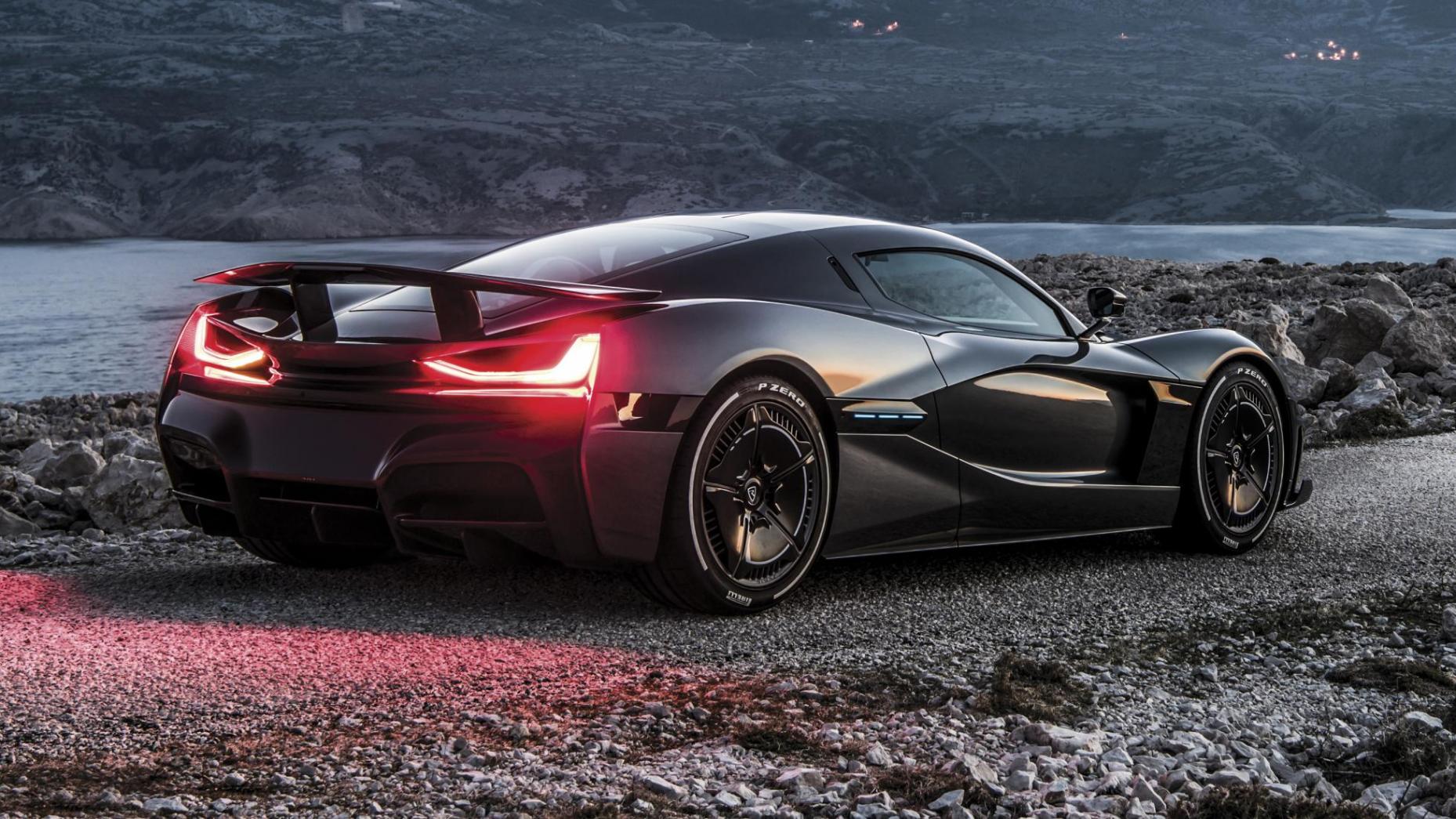
We often talk with varying degrees of enthusiasm about ‘communicating’ with a good car (sometimes perhaps too enthusiastically). How it ‘talks’ to you, how it feels, how it encourages you to further explore its limits via reams of ‘feedback’.
Rimac’s incoming C_Two – an electric hypercar with 1,887bhp and the ability to go from 0-100kph in 1.97s – will quite literally talk to you. Tell you what it needs. How to best explore its limits. Perhaps one day, it’ll laugh at other primitive hyperthings that merely coach their drivers using a variety of tyre squeals and smoke signals. It will pity them.
We know this because TopGear.com has also quite literally been talking to Sacha Vrazic, the director of Rimac’s autonomous driving division, about the C_Two’s startling new ‘Driver Coach’ functionality.
Naturally, we can’t yet show you pictures of some of the tech involved because it’s still in development, but here, via pics of the C_Two in motion, a short video and some words, we will try and explain.
It's basically your own personal driving coach. And it'll be standard on the C_Two
“What we are building is a system where AI plays a key role in teaching the driver how to perform on racetracks, at the maximum vehicle performance,” Sacha explains. “Not all of our customers are professional drivers, but we want them to really enjoy the car and have fun with it.”
Because the C_Two’s parameters are seemingly untouchable, because it’s so powerful and torque-heavy and soul-crushingly fast, because it will leap buildings in a single bound, AI might be a handy confidante… to make sure you’re doing it right.
It’s also wrapped up as a standard feature in the C_Two. Nice.
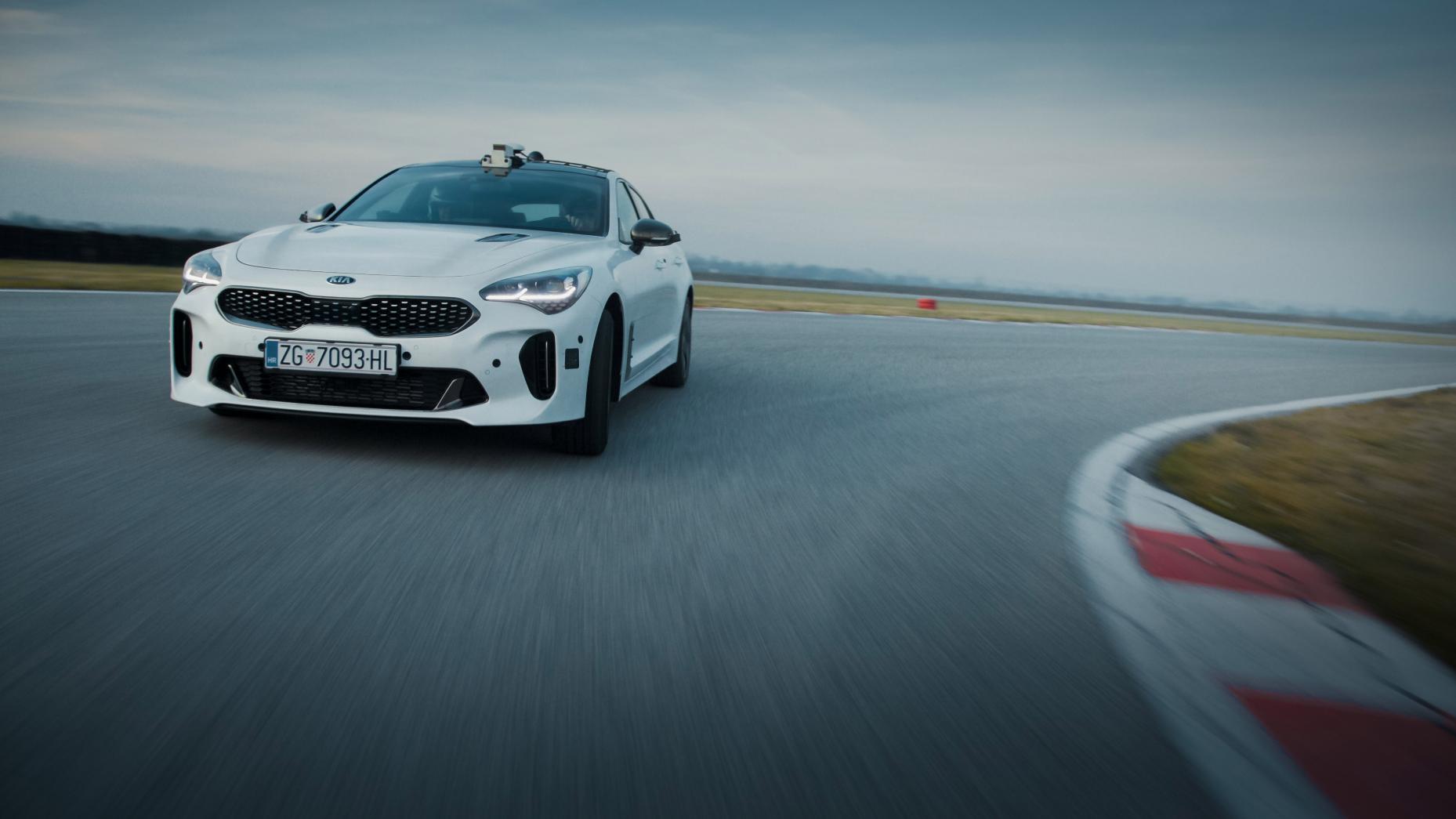
There are many, many sensors and cameras
It’s being prepped for Level 4 autonomy, via nine onboard cameras, LIDAR, radar and 12 ultrasonic sensors, all feeding into an as-yet commercially unavailable supercomputer. “It collects about six terrabytes of data every hour,” Sacha explains, “and we are working on the algorithms ourselves, like perception, motion planning, driver monitoring and localisation.
“We found a platform that can meet our needs, and that’s the NVIDIA Drive Pegasus supercomputer platform. That’s the most powerful platform on the market right now,” he adds.
Rimac has fitted all the kit to a Kia Stinger, which it’s using for testing (pictured).
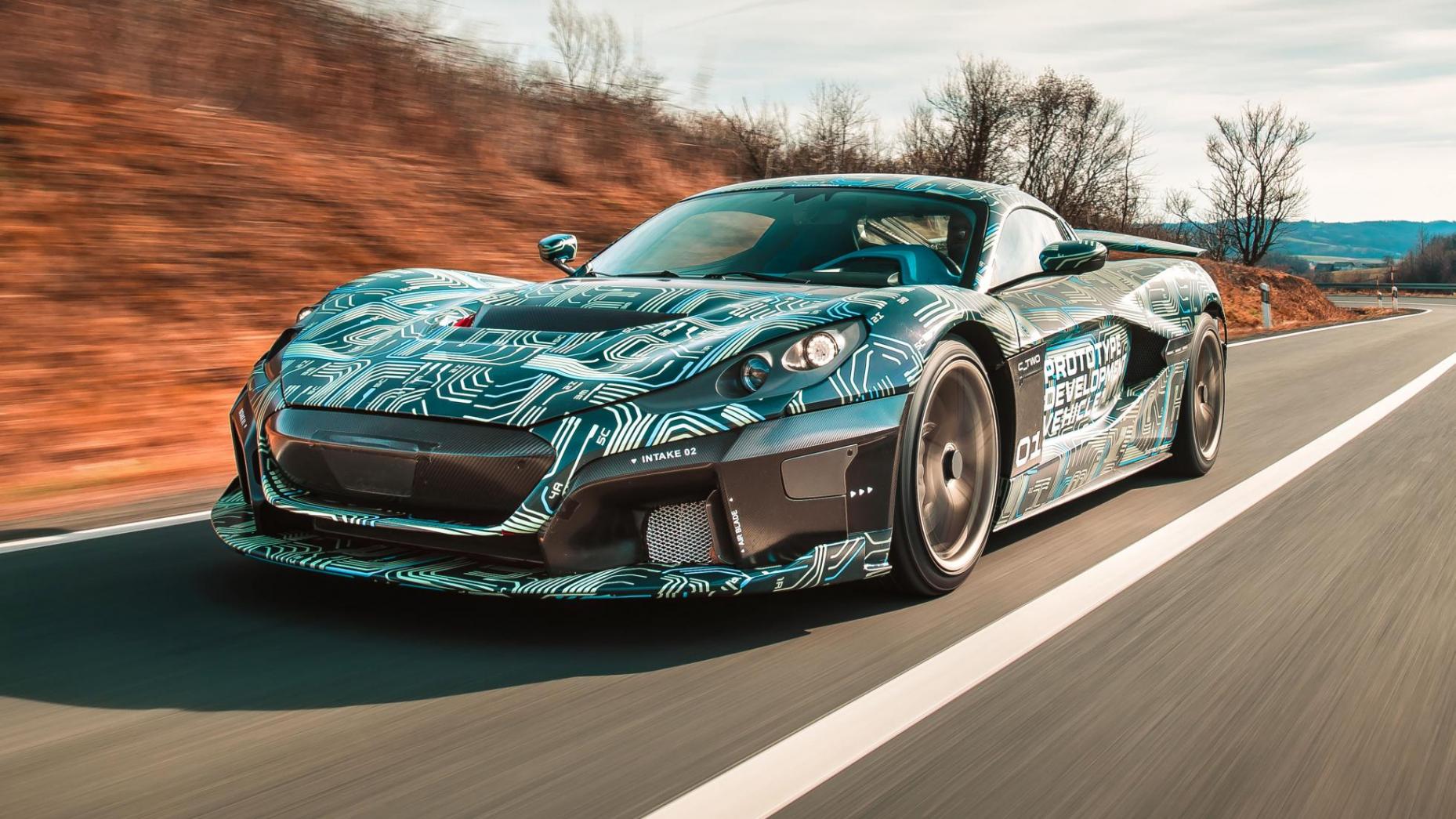
Actual, real-life human drivers were used in the making of the Driver Coach
“We used professional drivers of course, to help us understand the ideal lap, but the AI can compute a perfect lap as well,” Sacha tells us. “Then we put the pro driver lap and what we consider as our (the AI) lap on top of each other, and see the difference. That’s a big part.”
Sacha won’t tell TG who these professional drivers are, only that the data they log through their human laps “is mostly the same type of analytics”, and Sacha’s team is trying to “push the boundaries to show something different, something more detailed, so you can analyse more”. It might also help those pesky earthlings with their own deltas.
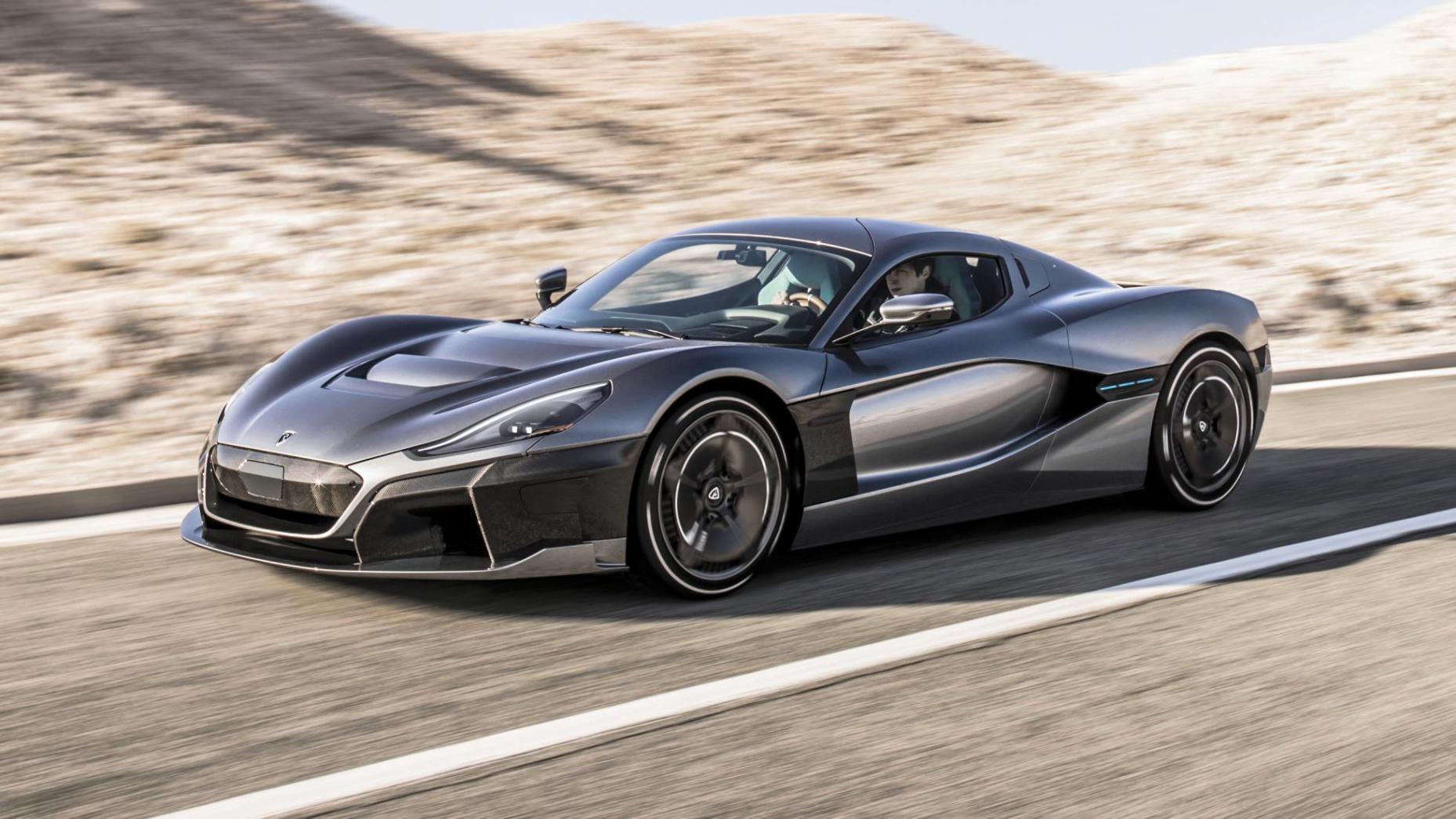
The aim is for the AI to become so proficient, it’s quicker than a human
Yeah, no beating around the bush on this one. “We are working towards that,” Sacha tells us. Nobody tell The Stig.
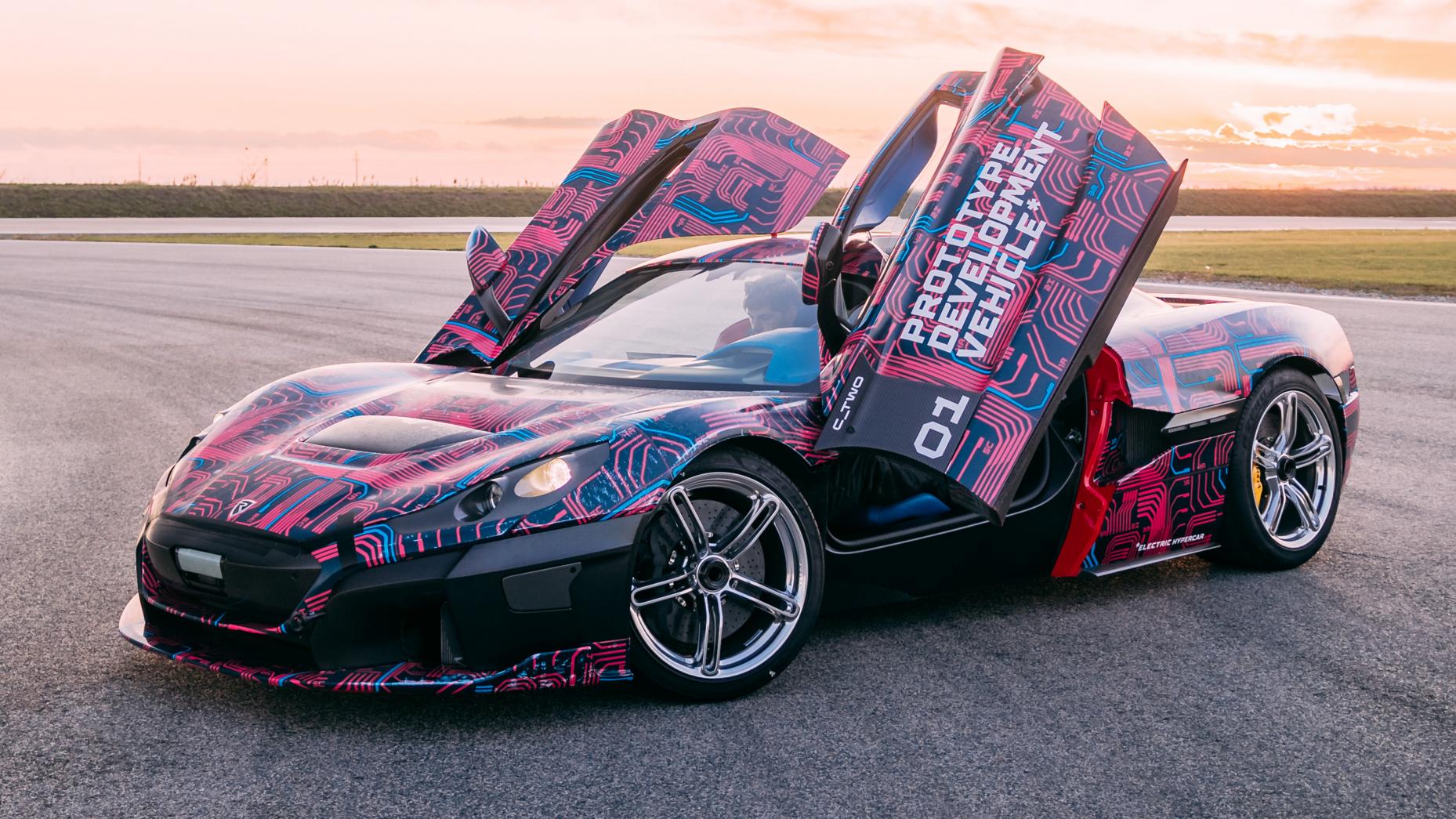
Once this perfect lap is mapped, the Driver Coach will teach the driver the Ways of the Force
Then comes the heart-thumping, fully autonomous lap, at high speed, instructing the driver as to what to do at each given moment.
“The system can then say, for example, ‘now it’s your turn, show me what you can do’,” says Sacha. Which basically means the driver then proves to the car what he or she is capable of doing.
“If the driver wants, they can pass through a performance assessment session.” After a couple of laps of AI assessment, it can throw up some training sessions for general driving skills, or something more suited to a particular circuit.
There’s audio and visual feedback, providing quite important data about braking points, acceleration, and how best to enter and exit a corner.
“Being a great driver, it’s not so easy,” Sacha laughs. “You need practice. So the AI behind that is motivating you, so that you can stay interested and enjoy the car.”
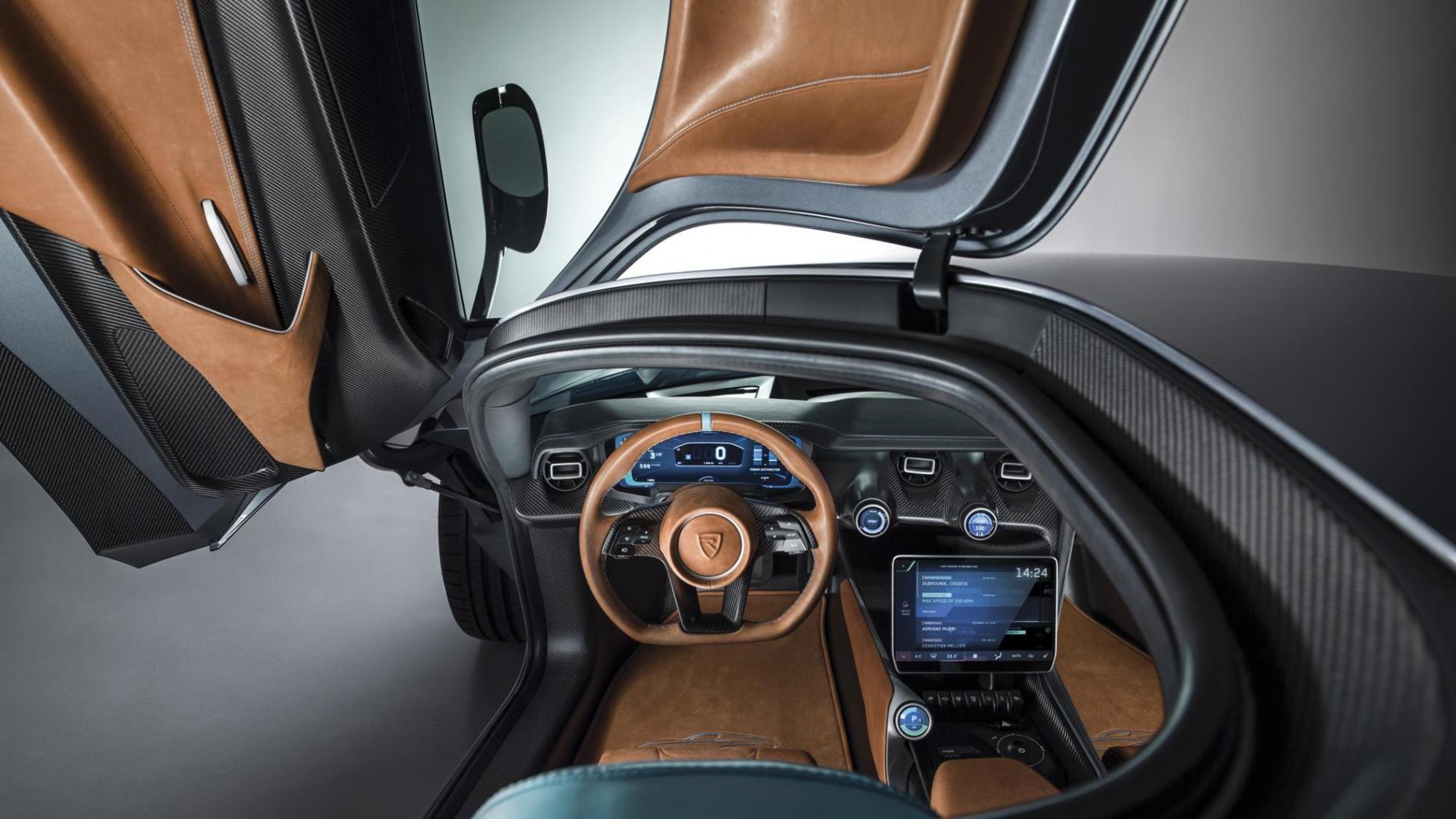
The visual prompts are displayed on the instrument cluster
“It’s not a head-up display,” Sacha concedes. “The technology was not ready for what we wanted to do. We will instead display the visual prompts on the instrument cluster – things like the borders of a track, the kerbs, the racing trajectory, the braking points, and all the objects that the car sees.”
This of course, is in addition to the audio feedback, so you’re actually looking at the track, and not climbing a tyre-wall trying to constantly read a digital display on the dashboard.
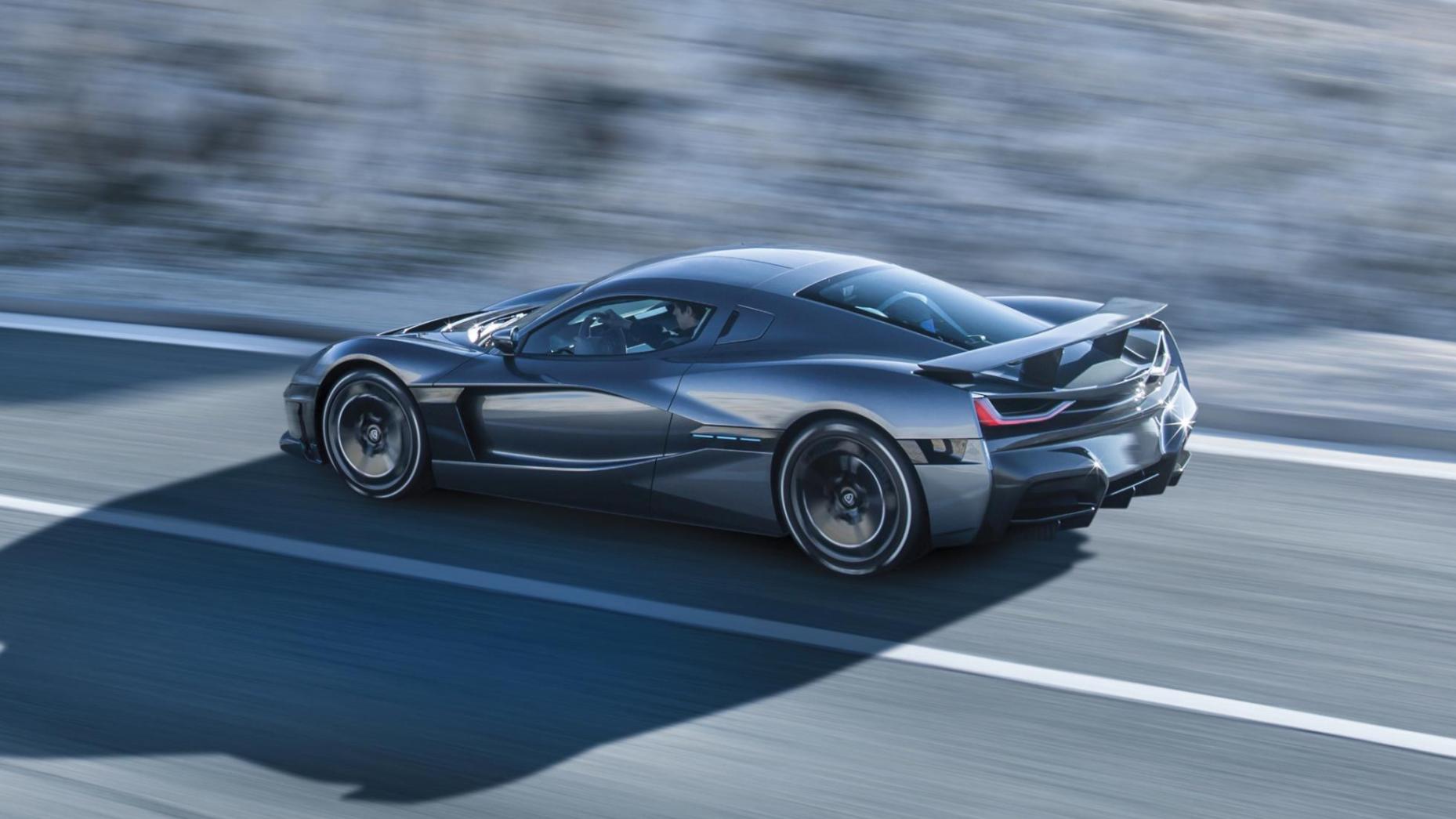
The AI will have its own identity… which includes the actual voice used
“The way the coaching will be done, the way instructions will be given and the voice, that’s all related to the AI’s own identity,” Sacha says. “The prosody of the voice also – if you need to give an urgent instruction or less urgent instruction.”
TopGear.com, being childish and silly, put forward the question as to whether it’s possible to program different voices into the AI. Say, like Darth Vader’s voice. Sacha laughs. “Yes, that could be possible. For now, we’re not planning on putting Darth Vader as a voice, but if we receive a lot of requests regarding that, we can always feature it.”
Rimac has a cognitive psychologist on board working with Sacha’s team to fully develop this AI, and its identity and voice. “We are mostly focused on finding credible voices, someone you can listen to, someone you can pay attention to.”
TopGear.com humbly suggests the aforementioned Sith Lord would be someone you’d likely pay attention to. Indeed, after no doubt fluffing up your corner exit, Vader’s pained utterances professing your lack of ability would be endlessly amusing. The terrifying laboured breaths he takes after, maybe not so much…
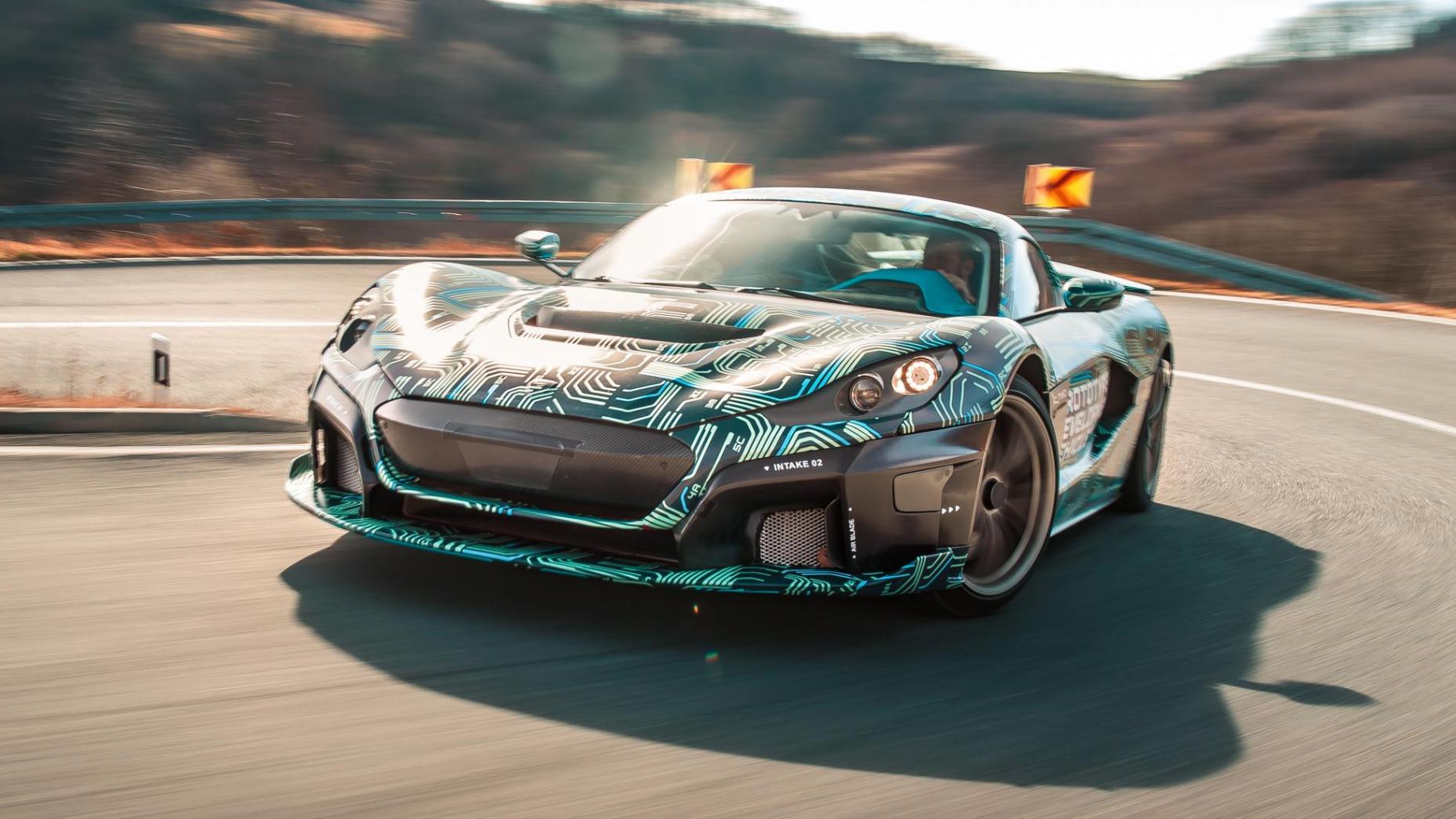
It’s possible to program drifts and burnouts
One childish topic led to another. Surely if it’s possible to program in a perfect lap, you can program the C_Two to do wild, lurid drifts? Maybe a burnout, or a J-Turn?
Once again, Sacha laughs. “Hypothetically, we can. We are thinking about a lot of cool things. Of course, our C_Two is a car than can actually drift, and we want our customers to enjoy that. In the future, we’re planning a lot of cool features around that.”
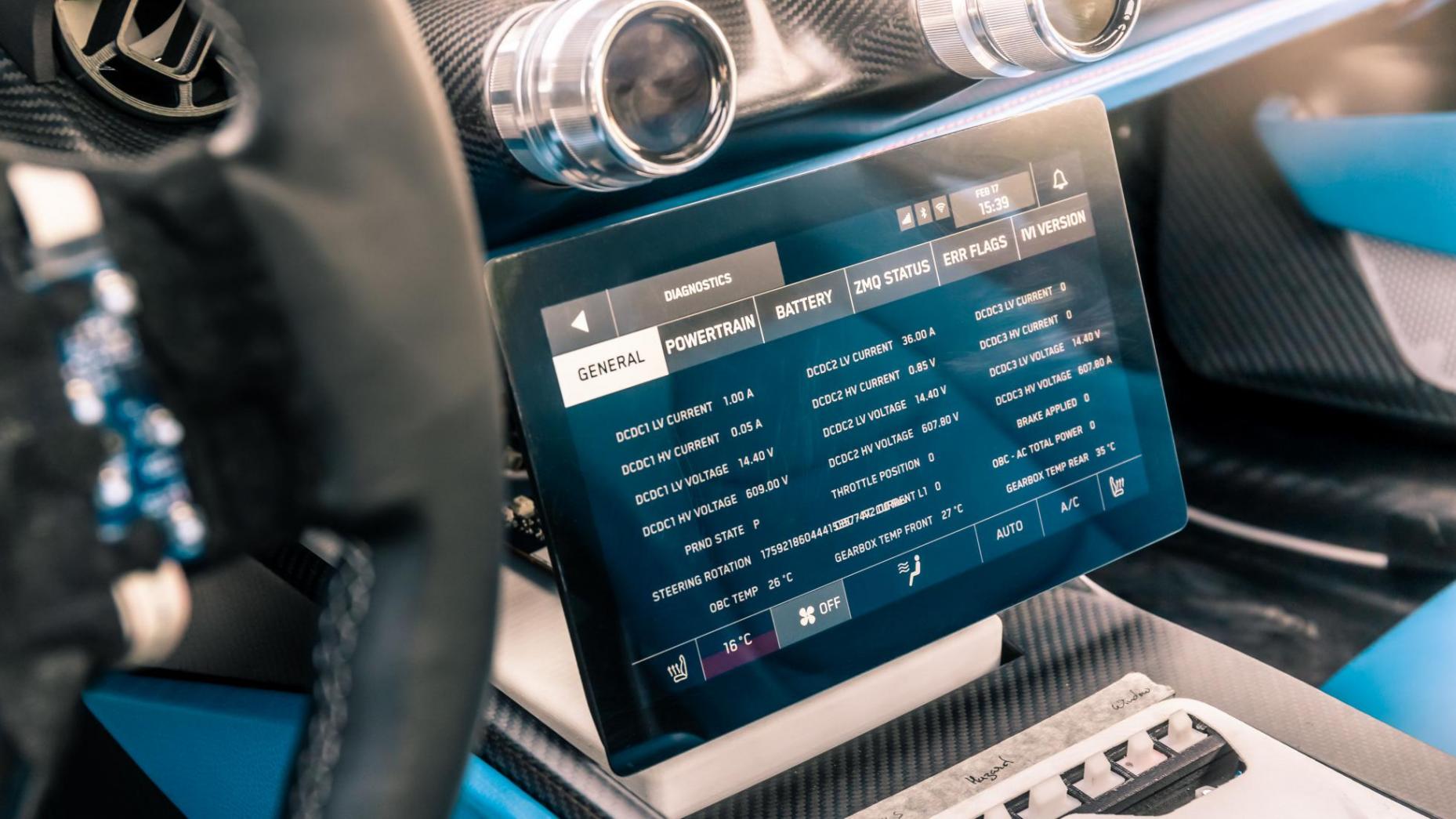
It can read your emotions and intervene if you’re stressed
Remember that bit where AI takes over the world? Yeah, that. “The driver monitoring [via the onboard camera] is another challenge,” Sacha explains. “It’s looking at the gaze of a driver, the head position and so on, and we’re working on detecting emotions. For us, the fear and stress levels are important, as they impact the cognitive loads.”
Say you’re getting particularly hot under the collar during a mad lap of your chosen track. And you’re continually fluffing things up. The car would ‘inform’ you immediately that it has detected you are stressed, and that it wants to take over. “We have to react in less than a hundredth of a millisecond,” Sacha tells us. “When a human detects danger, it takes over one second to react. For AI, it can be a hundredth of a millisecond.”
This of course, is quite important, for fairly obvious reasons. If they’re not obvious, then here’s why. “One second at 300kmh is 83 metres. That’s a lot. Just detecting an object is not enough, you have to anticipate what will happen, so we need to dynamically plan the vehicle path in motion. To do that, we need to localise the vehicle at a centimetre level on a track. That’s why we don’t use GPS.”
So – fast-reacting and fast-acting AI is essential when you’re careering down a track and things get out of control.
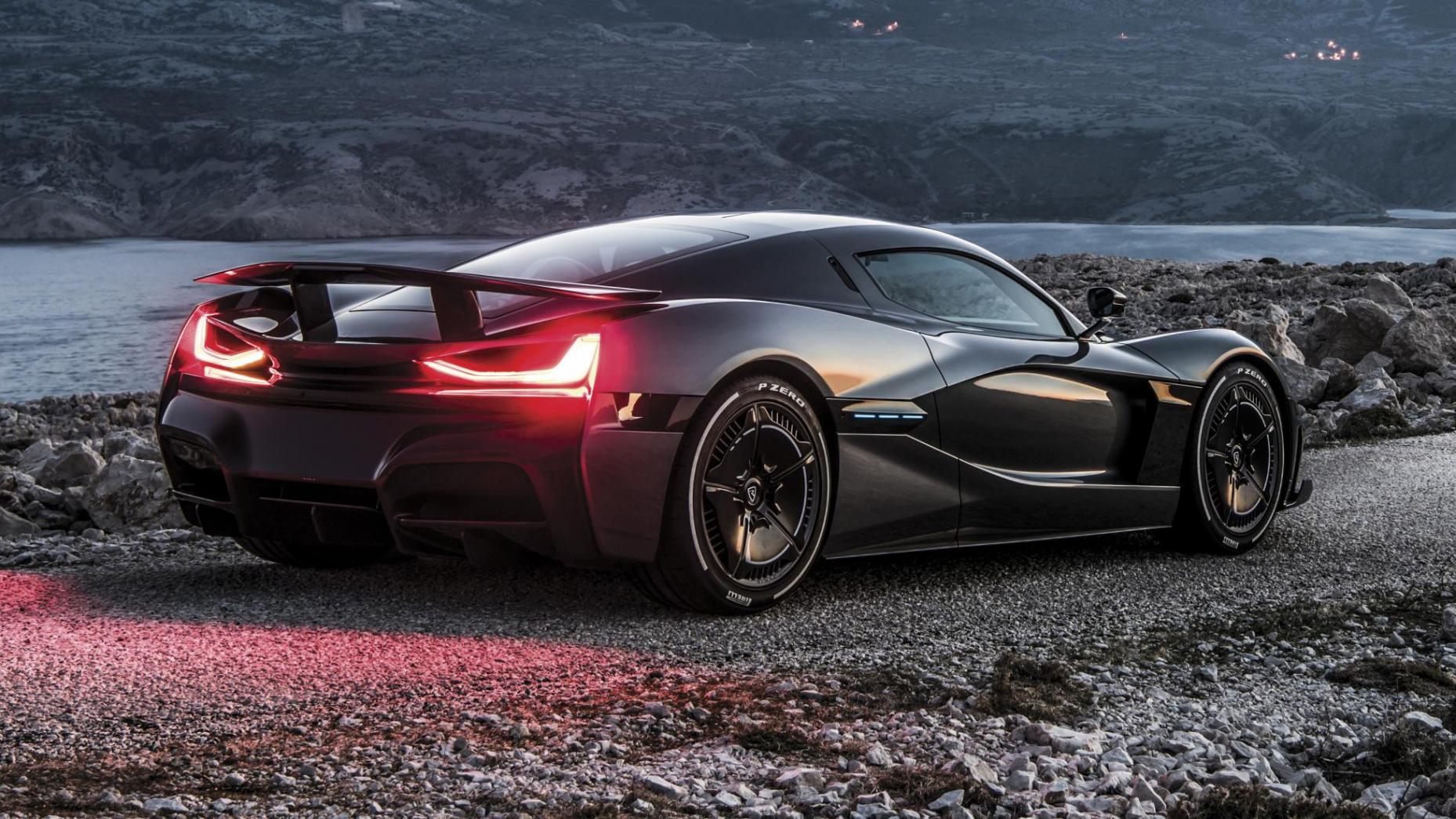
It won’t be available for road use
Not yet, anyway. “We wanted to create a signature feature for our vehicles,” Sacha explains. “We don’t want users of the vehicle to start racing on the highway.”
However, while a circuit is necessary for the Driver Coach, Rimac confirmed that the team is working on something that’s ‘scalable and possible to implement in road use later on’. Naturally, that brings with it a whole new set of challenges, but proving the tech on the racetrack – as is the case with these things – might help road cars down the line…

